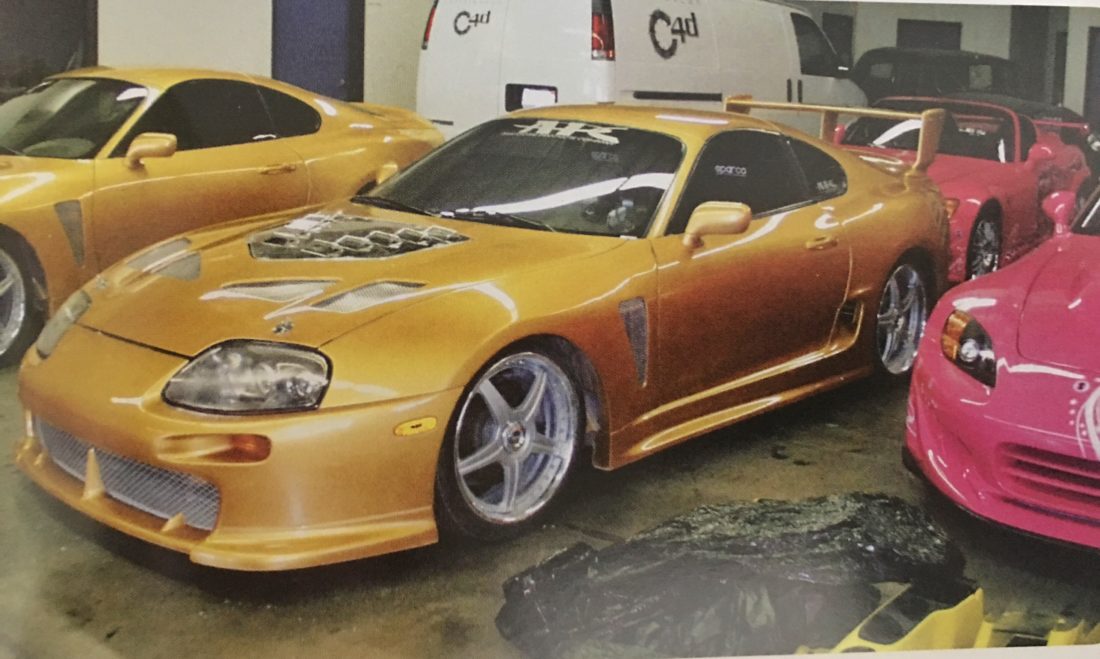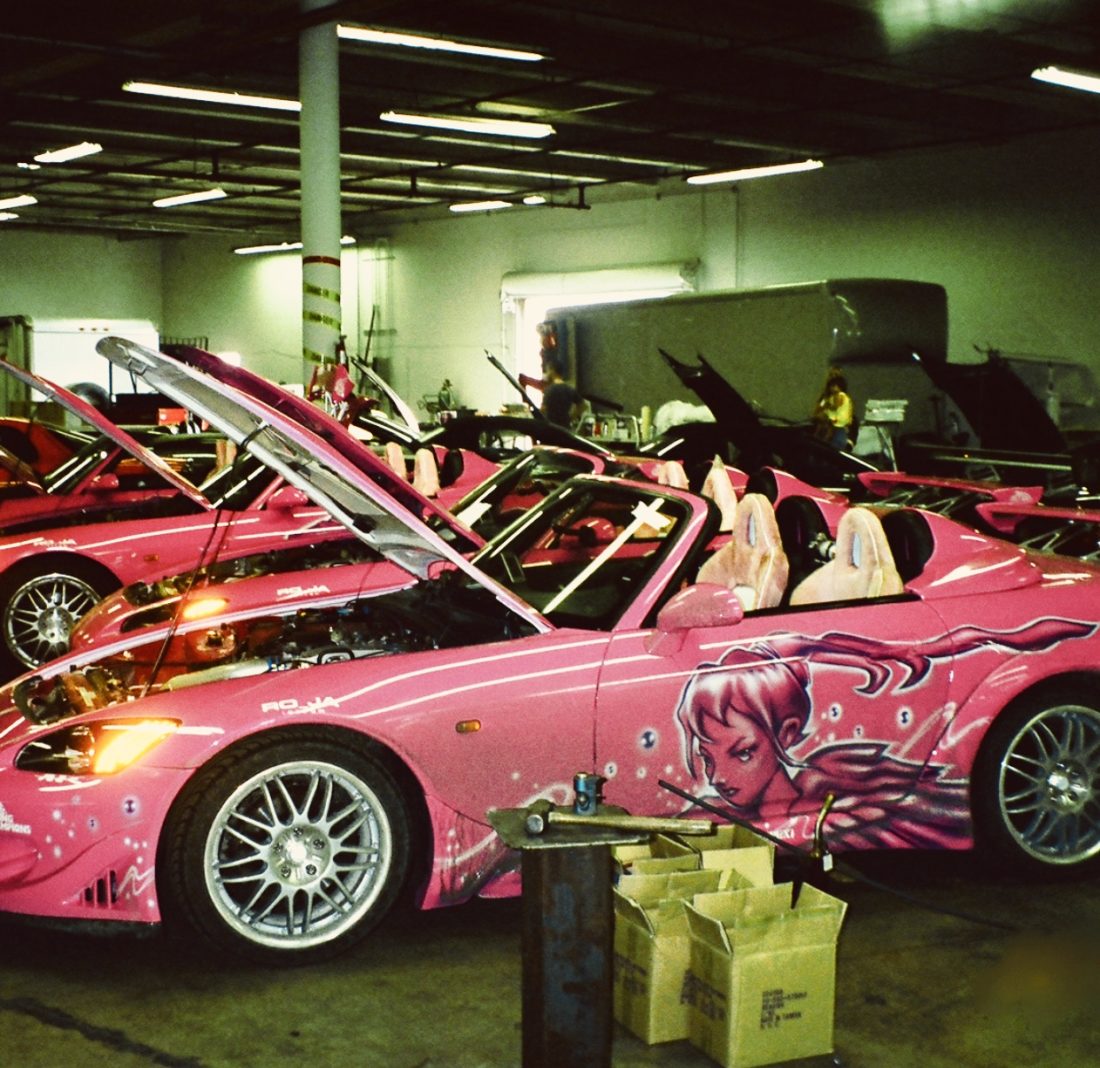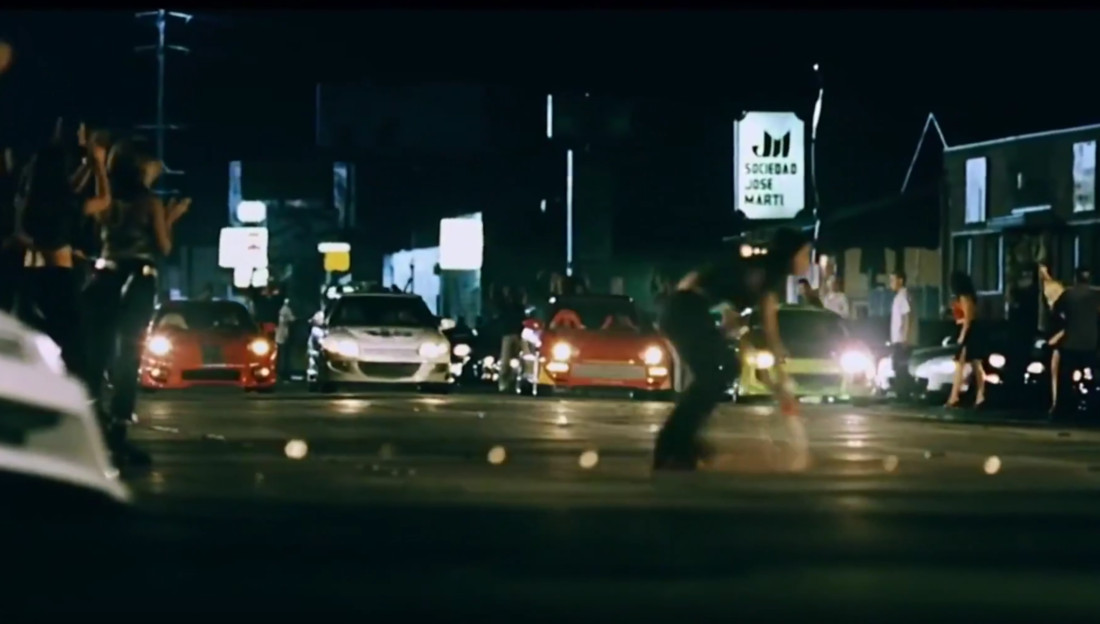Watch some of the behind the scenes/making of the various movies.
BEHIND THE SCENES FOOTAGE
Fast and Furious Car Specs
CHOOSE YOUR FAVORITE
Brian's Supra
Craig Lieberman’s 1994 Supra served as the Hero car. Four clones were built as well as one “buck” car.
Only the Hero car was turbocharged. – all the others were naturally aspirated, automatic transmission cars.
Since the car was already heavily modified when Universal found it, they opted only to change a few things, such as the wheels, body kit and paint color. All the rest of what you saw was already in place before production of the movie began.
Get the full specs here.
Brian's Eclipse
2 Fast 2 Furious Skyline GT-R
Brian's Mitsubishi Evo 7
Dom's Mazda RX7
Letty's 240SX
Tran's S2000
Vince's Maxima
Heist Civics
A lot has been written on the internet over the years about the Fast and Furious car specs. In almost every case, the information is inaccurate. If you relied on Automotive magazines of the day to give you accurate information, you’d also be wrong. Magazine editors are great at creating hype (aka bullshit) to sell magazines.
Over the years, so called bloggers, none of whom ever spent a day on-set with the productions, started doing blog posts about the cars. Their “facts” were almost total fiction, having received their “information” from automotive forums back in the day. Those forums were/are notorious for attracting some of most inexperienced and ill-informed enthusiasts.
In short, everything you’ve read up to now has been crap. Erase it from your memory.
I was there for all of it – the building of the cars, the process of remaking the cars for 2 Fast 2 Furious, even the pre-release marketing, the international marketing and also for the development of die-cast cars.
I have reams of data on the Fast and Furious car specs, in many cases, full parts lists and part numbers.
I was personally friends with each of the owners of the original cars that served as the “Hero” cars, the model from which the clones were replicated.
Before publishing my book (Crashing Cars), I took time to speak to each one of them personally to verify the data. The data you’ll read here is the very best data we have. When new info comes in, we update it.
What You Need To Know First.
Not all movie cars are created equally.

Before you dive into the specs on the cars, you need to understand the references.
For starters, unless noted otherwise, the specs I’ve provided pertain only to the Hero car. The Hero car, aka the “1st Unit Principle” car, is usually the prettiest, the shiniest and the most complete version of the car.
Since motion picture productions usually build several clones of each car for use in stunts or at other locations, this practice is necessary.
The clone cars are never as complete as the Hero car. In most cases, they’re hurriedly prepared. Paint jobs are one-day affairs, interiors might be incomplete, and many of the parts may be held in place by tape, wire or zip ties.
So whatever you do, do NOT assume that the clones or stunt cars have the same modifications as the Hero car – they do not. In most cases, clones and stunt cars had standard drivetrains, automatic transmissions and were nowhere near the quality of the Hero car.
Before you ask why a studio would “skimp” on building the clones, you must understand that it isn’t necessary to do a full builds of stunt cars.
There’s no need to put a $20,000 stereo system in a stunt car just because the Hero car has it. Shortcuts are taken when building the clones and stunt cars to save time and money. 99% of the time, audiences can never tell the difference from a stunt car or Hero car on-screen.










